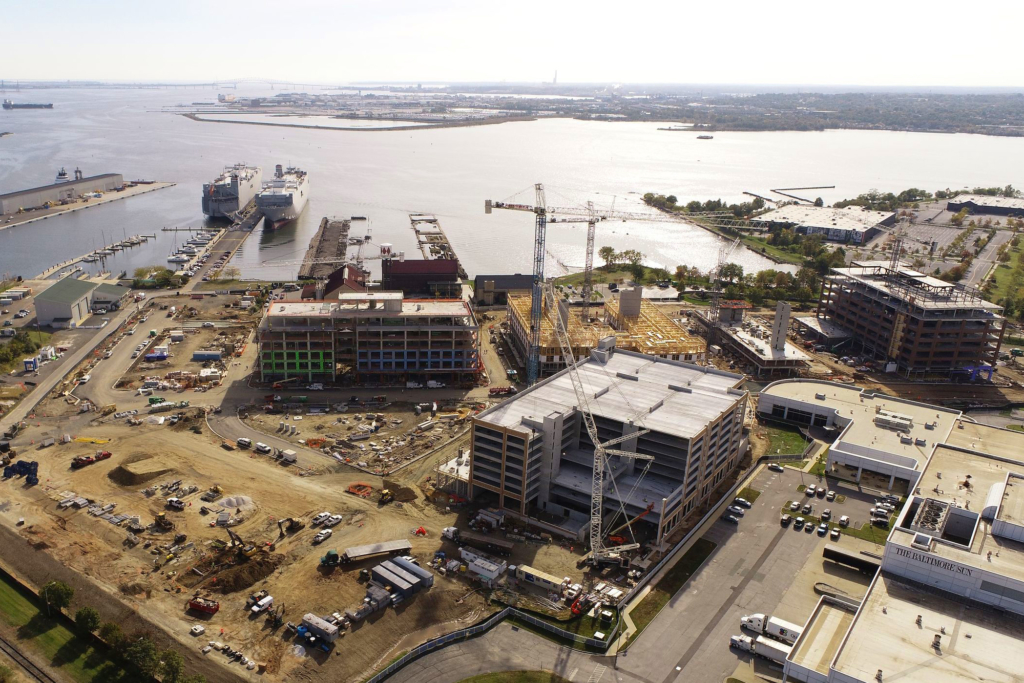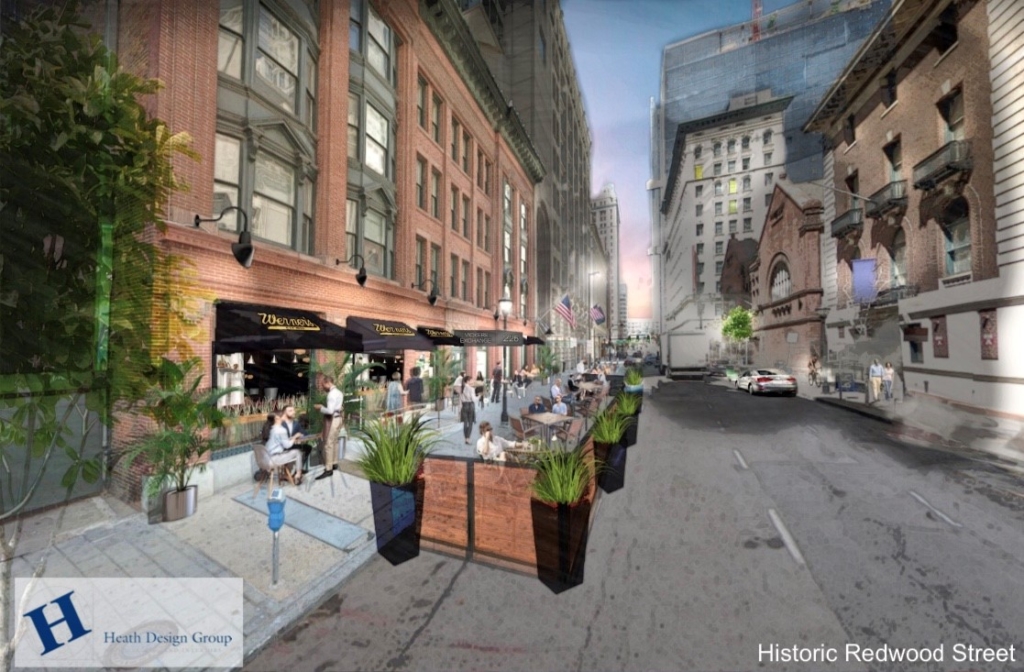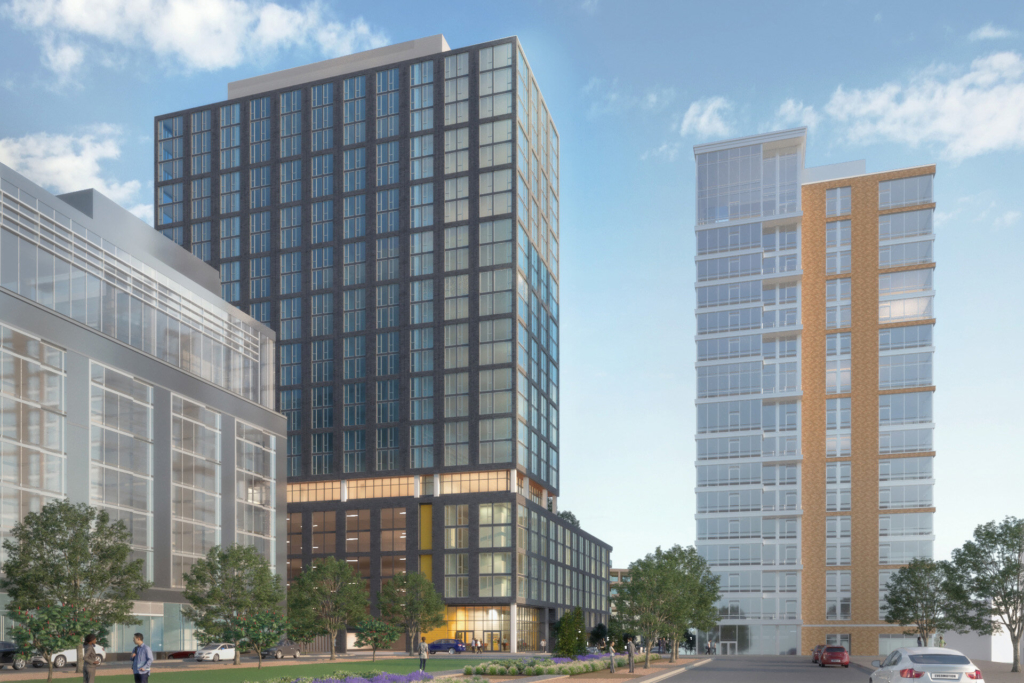Excited about cranes, concerned about crime
It’s Baltimore’s version of a Tale of Two Cities.
One set of news headlines celebrates massive, ongoing investment in Port Covington, Harbor East, Harbor Point, Penn Station, Lexington Market and other developments in the heart of the city. Other headlines and quieter discussions raise alarms about urban crime, high vacancy rates in downtown offices and an exodus of employers, workers and retailers from the Central Business District.
Within the same moment, Baltimore City can feel like it’s on the verge of experiencing a modern urban renaissance or falling into a prolonged struggle with urban blight in the downtown. That has left developers, urban planners and others searching for measures to ease the city’s challenges and stoke the renaissance.
The broad downtown core is experiencing “an incredible level of investment that speaks to a level of investor momentum that one would not anticipate given the city’s many challenges,” said Anirban Basu, Chairman and CEO of Sage Policy Group.

Vertical construction is well underway on Chapter 1B of Port Covington. Its 1.1 million square feet of office, retail and residential space is expected to attract innovative employers and thousands of jobs to Baltimore City. Photo Courtesy of the Port Covington Development Team.
This spring, the Port Covington Development Team began vertical construction of Chapter 1B of its 235-acre development. Now, hundreds of construction workers fill the site daily, erecting 440,000 square feet of office space, 580,000 square feet of residential and 116,000 square feet of retail, which are expected to attract innovative employers and thousands of jobs to the city. Also this spring, Beatty Development unveiled plans for Parcel 4 of Harbor Point. The development, which is already attracting blue-chip tenants such as T Rowe Price and RBC Wealth Management, is set to break ground on two new apartment towers, a hotel and street-level retail before year’s end.
Investment in projects – such as Port Covington, Harbor Point and Harbor East – create “oases that look and feel very different from the balance of the city and can be entered without engaging with much of the city,” Basu said.
But for Baltimore to flourish, investment, growth and redevelopment needs to spread throughout the heart of the city, including to struggling areas such as the historic Central Business District (CBD).
“North of Pratt Street is tough right now,” said Colin Tarbert, President and CEO of the Baltimore Development Corporation (BDC). “The office buildings tend to be older and many are B or C class.”
Vacancy rates had already neared 24 percent in the CBD early this year. Now the mid-pandemic, soft market for office space is convincing some CBD tenants to move to smaller, nicer space – often closer to the harbor – in order to create more attractive and appropriately-sized offices for hybrid workforces, Tarbert said.
A $50 million plan to move workers out of State Center is expected to place nearly 3,000 new people in CBD offices. In addition, conversions of old office buildings to new apartments have helped boost residential population to 10,000 and turned the CBD into Baltimore’s fastest growing neighborhood, according to the 2020 Census.

Lack of amenities is an obstacle to the revitalization of the Central Business District. On Redwood Street, however, Werner’s Diner is undergoing a renovation and will reopen as a seven-day operation, tailored to serve both workers and residents. Rendering courtesy of Byrnes & Associates.
Byrnes & Associates was so convinced of the growth potential in the CBD that it purchased two properties – 225 and 233 E. Redwood Street – in October 2020. Combined, the buildings have 90,000 square feet of office and retail space, and are leasing more quickly than anticipated.
“When people tell me the city is dead and no one is coming back, I show them my facts,” said Brad Byrne, Principal.
Byrnes & Associates has signed 25 office leases for the Redwood buildings in the last nine months. While most of those are one-year, single-office leases, “eight leases are for three to five years and range from 1,500 to 5,000 square feet. Multiple leases are with companies that are expanding to Baltimore from Washington, D.C. or Philadelphia,” he said.
While the migration of residents and state workers can boost the health of the CBD, downtown Baltimore is still struggling with a serious shortcoming, Basu said.
“The historic Central Business District has become so de-amenitized. There are not enough restaurants, service providers or specialty retailers,” Basu said. “For downtown Baltimore to have a renaissance, it needs those amenities. But it is a chicken and egg problem. If the workers aren’t there, why would the service providers locate there? But if the amenities aren’t there, workers and employers won’t want to go there either.”
At the same time, “there is an exodus happening on Pratt Street,” said Owen Rouse, Vice President of Investment Sales at MacKenzie Commercial Real Estate Services. “T. Rowe Price is building a new campus in Harbor Point, Bank of America is moving to Harbor East, Transamerica is transitioning to remote work and Pandora may be leaving downtown.”
Those departures combined with existing vacant space could leave 800,000 square feet of Class A, waterfront office space empty within the next 24 months, Rouse warned.
In addition, “the toxicity of Harbor Place continues unabated,” he added.
While many people speculate that Harbor Place won’t remain in receivership much longer, they also insist the property needs transformational change in order draw workers, area residents and tourists to the Inner Harbor once again.
“Tear down the pavilions completely, create a competition among designers and architects around the world to create the best idea for that real estate,” Basu said. “Completely re-envision that part of the harbor. Come up with something so iconic it will bring more visitation to Baltimore and create a greater sense of confidence and pride among Baltimoreans.”
To rebuild vibrancy in the CBD and Inner Harbor, city leaders must also address the issue of crime – both real and perceived. Reports of break-ins, muggings and violent crimes downtown understandably concern employers and workers. Sometimes real crime stories “get morphed and exaggerated into something much more frightening by the time they are told in Hunt Valley and Monkton,” Rouse said. And sometimes, people are deterred from going downtown by non-criminal conditions, such as the presence of squeegee kids or homeless adults.
Consequently, “crime has become more of an issue than many people realize,” Rouse said. “I don’t think it makes people decide to leave in the middle of their lease, but maybe their lease is coming up in a year and a half and they start talking to people in their office about it. If they hear the word ‘crime’ more than twice in those discussions, it will become an outsized factor in their decision. Crime becomes a cumulative chirp in their ear and they start looking at locations in the county.”

Harbor Point, which is already attracting tenants such as T.Rowe Price and RBC Wealth Management, is scheduled to begin a new development phase before year’s end. Crews are set to break ground on two apartment towers, a hotel and accompanying, street level retail. Image courtesy of Beatty Development.
City and business leaders recently discussed improving lighting and security in the downtown core, as well as working to correct inaccurate information.
“The crime issue in downtown, specifically the CBD, is more about perception,” said Terri Harrington, Managing Principal of Harrington Commercial. “It is historically one of the safest areas in the city. However, to use the cliché, the perception has become our reality… During COVID and the unrest, the CBD was not put in a good light… We need to address the perception issue. We need to do a better job promoting the city and downtown. We also need to show downtown is safe with a visible security presence until we can overcome these challenges.”
Fears that companies would leave downtown Baltimore have not come true to date, Harrington said. “Many companies have seen it as their civic duty to stay in the city, if not in the CBD. Other companies up for renewal have adamantly stated they will not abandon the CBD.”
Meanwhile some companies are moving into downtown or upgrading their space in the city, Tarbert said. In May, Alertus Technologies purchased the ‘ticker tape’ building at 10 N. Charles Street in order to move its headquarters and 120 jobs into downtown Baltimore. Truist is expanding its space at 120 E. Baltimore and bringing more of its employees downtown.
On the west side, a cluster of projects is breathing new life into a long-neglected area that was once a commercial hub of the city, Tarbert said. Those include the $40 million renovation of Lexington Market, the Howard Row development that is creating apartments above street-level retail in several historic buildings and the $100 million, mixed-used Compass development at Howard and Lexington. City officials also expect to announce an agreement soon for a $150 million renovation of Royal Farms Arena.
Furthermore, some of the companies leaving the historic CBD are only moving eight blocks away.
“One of the biggest votes of confidence for the city and downtown recently was T. Rowe Price deciding to stay downtown, build a 450,000-square-foot campus to serve as their global headquarters while they manage about $1.5 trillion in assets. I look at that and say bravo Baltimore City,” Byrnes said. “Baltimore is not going to be the only city on the Eastern Seaboard that doesn’t participate in the urban revival we are seeing up and down the coast.”